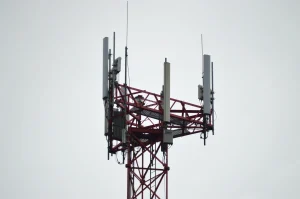Have you been wondering how your job would look like as a business analyst? This article is dedicated for those who want to glance at ways modern businesses use business analytics to create an immense value out of data.
But first, a short note on business analytics will set a base for your understanding.
In short, business analytics consists of– statistics, business knowledge, and machine learning tools that use digital data and convert it to information in the fastest time. This information then acts as knowledge for businessmen who use it to formulate strategies.
Now, as it’s clear what business analytics is, the picture would become more lucid when we read the following applications of business analytics for modern businesses.
Applications of Business analytics for modern businesses
For Telecom

Business analytics in the telecom industry successfully runs the most critical business operations. For example, monitoring of performance (Key Performance Indicators) and customer experience (QoE) is achieved with real-time analytics (within minute processing). More advanced applications include: traffic prediction– estimating how in a certain period of time in future, a network link would be busy; node failure– predicting fault in network devices such as routers and switches; and resource allocation in 5G– using predictions to configure an optimal channel for a user.
Hence, the power of business analytics, specifically its ability to answer four questions (What, why, when and how) against a business problem, is successfully leveraged by Telecom companies in their routine network operations.
For Finance

Today, ‘transparency’ requires finance companies to report numerous data fields to the regulators and stakeholders. These include alongside the General ledger details– such as account information, the sub-ledger details– such as account payable and inventory, as well as the non-financial parameters– such as customer name and time and date. Business analytics creates an ecosystem that organizes and reports this data in real time, supporting greater visibility and ultimately better business decision making.
Optimization of finance processes, a core requirement in today’s fast paced business environment, is yet another application achieved via business analytics. Yes, business analytics can also craft optimized plans from its capability known as the ‘prescriptive analytics’. It’s a type of business analytics that creates a step-by-step guide of a process that aims for optimization. For example, a finance company could answer ‘how to maximize profits in the future for an XYZ service?’. A prescriptive analytics algorithm would create a course of action that emphasizes on targeting the top paying customers.
For EdTech

Business analytics plays a defining role in revolutionizing digital education. It supports creation of a customized learning trajectory for each learner based on their unique needs (called contextualized learning). The business analytics platform captures vital touch points of learners as they access educational content on the device. A feature set is created and matched with a record of historical data patterns that describe learning behavior of individuals. Using the results, and knowledge from neuroscience, a customized learning experience is created for each student.
For Healthcare

Business analytics helps health professionals predict deterioration of health by detecting early signs in the patient as they reside in the ICU and general ward. This helps practitioners take preventive measures on time and plan emergency interventions beforehand.
Similarly, business analytics is used to analyze the symptoms of patients and categorize ‘at-risk patients’ in high volume situations. This gratefully helps practitioners to make informed decisions on patient selection when it’s busy in the hospital.
Business analytics is also used to manage administrative operations during patient surge. For example, a hospital predicts the number of patients they receive in the fall (when there’s a high probability of a dengue emergency). The medical staff can use the patient forecast to gracefully plan and arrange an emergency facility– such as scheduling staff, stocking medications, and keeping beds and ventilators etc to serve the patients smoothly.
Finally, another application of business analytics in healthcare exists in the form of reviewing medical staff performance. Using dashboards (a graphical interface that reports real-time and historical data) hospital administration can track overall hospital performance as well as individual performance of the medical staff. This helps them establish valuable reward systems as well as create employee training programs.
Conclusion
To summarize, business analytics is a powerful discipline whose applications are not limited to a small set of industries. Instead it finds its usage in any industry on the planet as it has the potential to answer any sort of business question.
Learn more!
To learn more about how business analytics is used in organizations, read our dedicated article (importance of business analytics).
Along with learning how organizations use data to fuel business strategy, you’ll also find more applications of business analytics based on departments such as– marketing (marketing analytics), supply chain (supply chain analytics), customer relations (CRM) and resource planning (ERP), as well as how country’s national institutions use business analytics.




